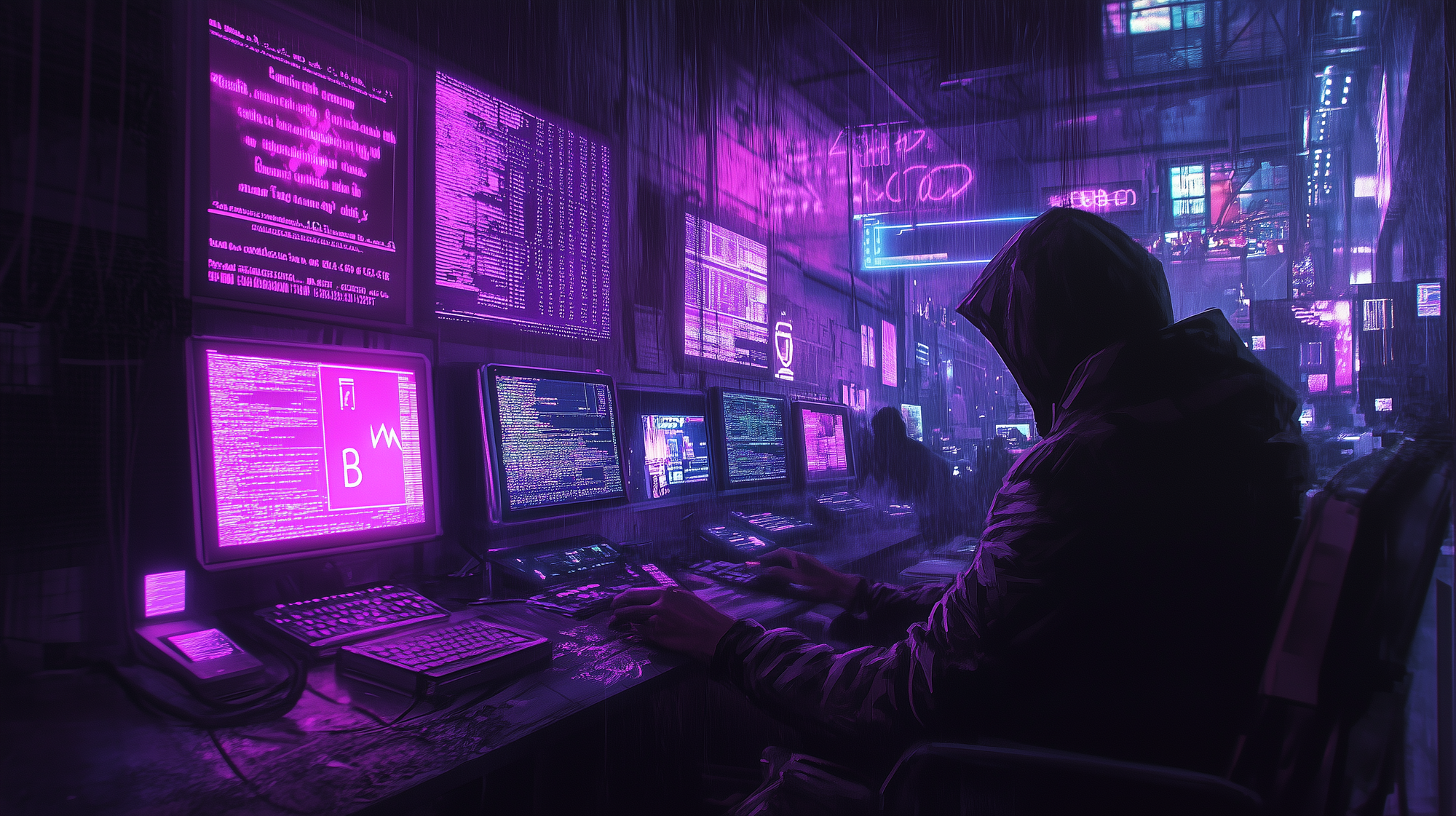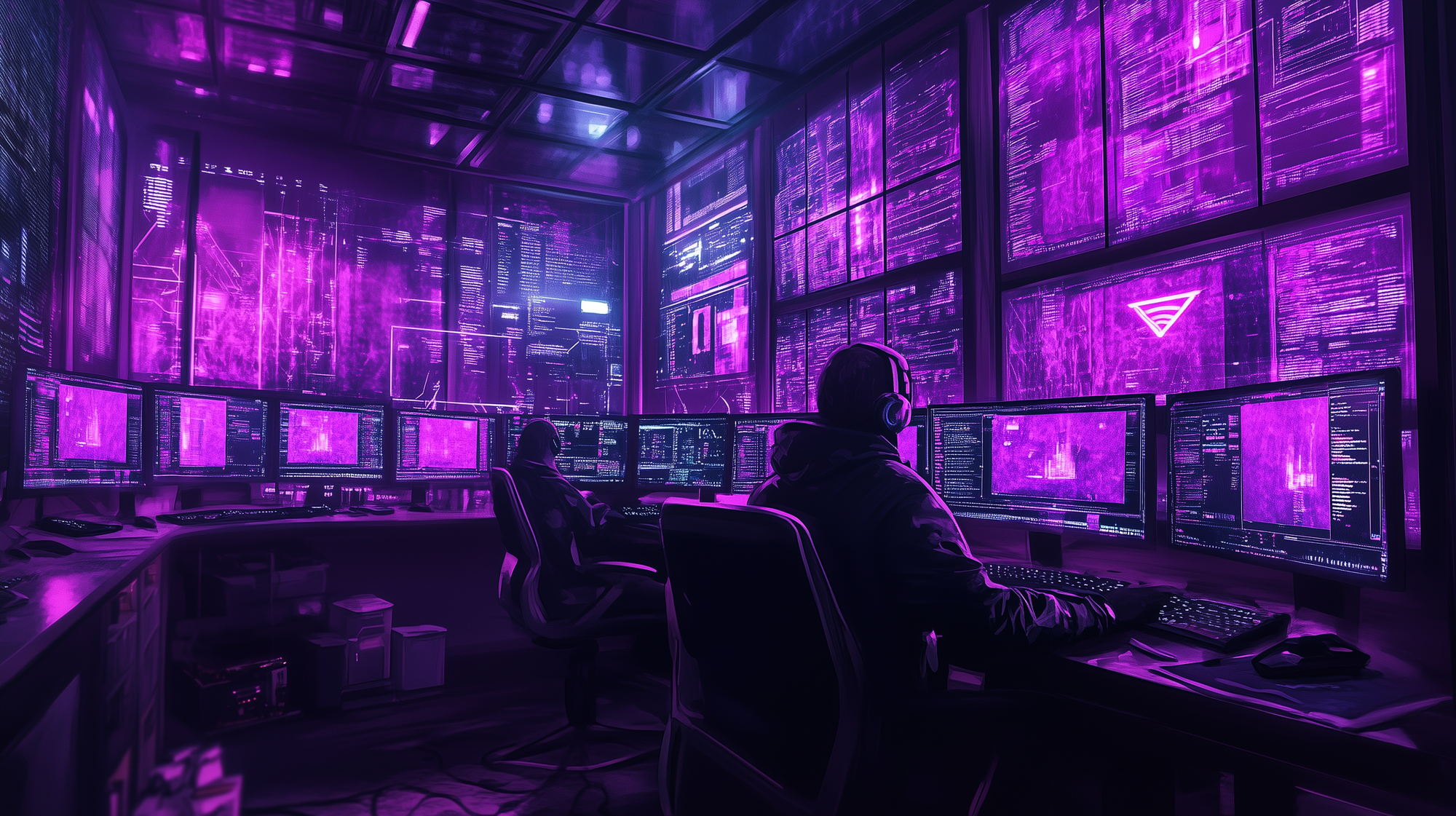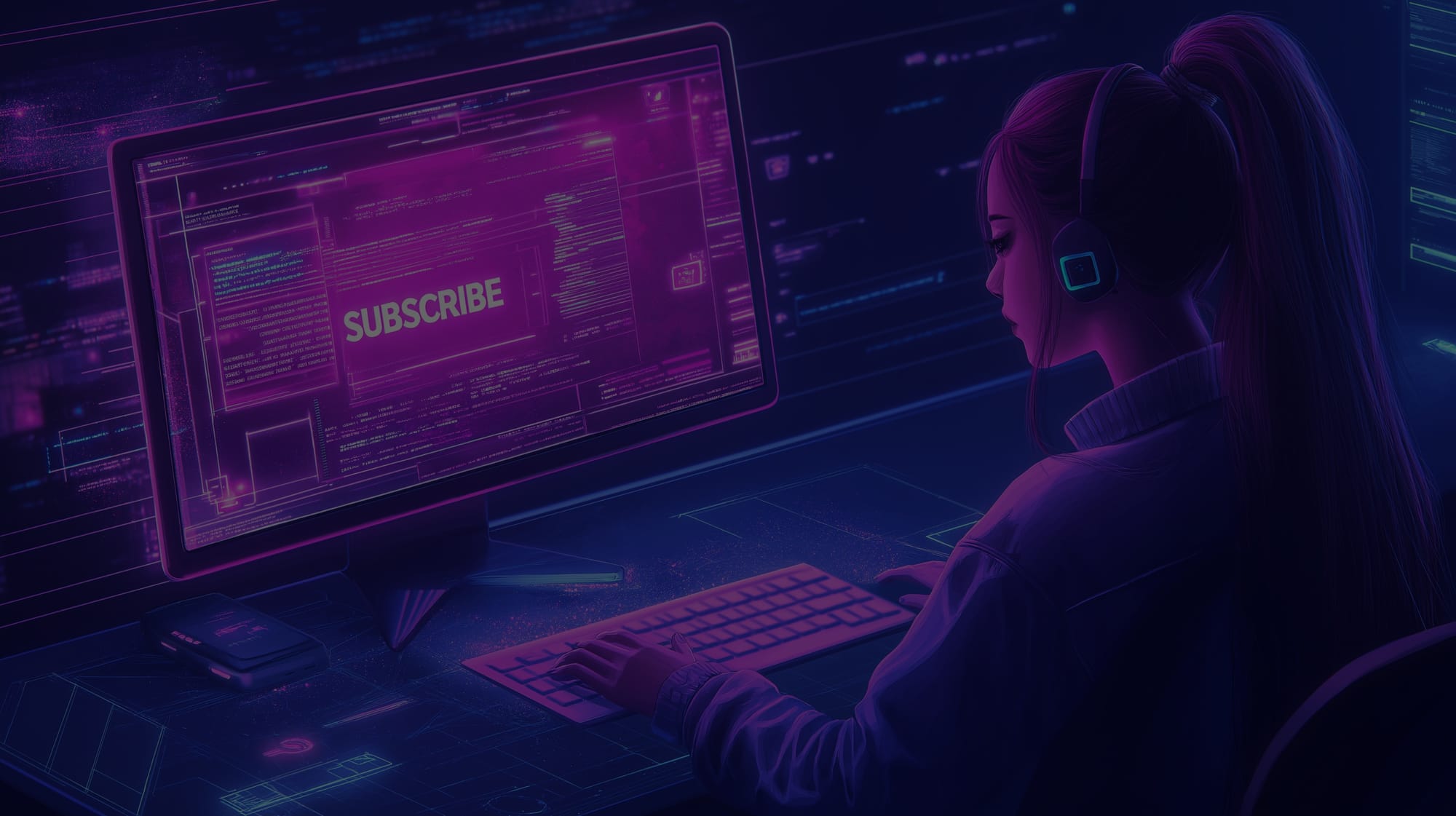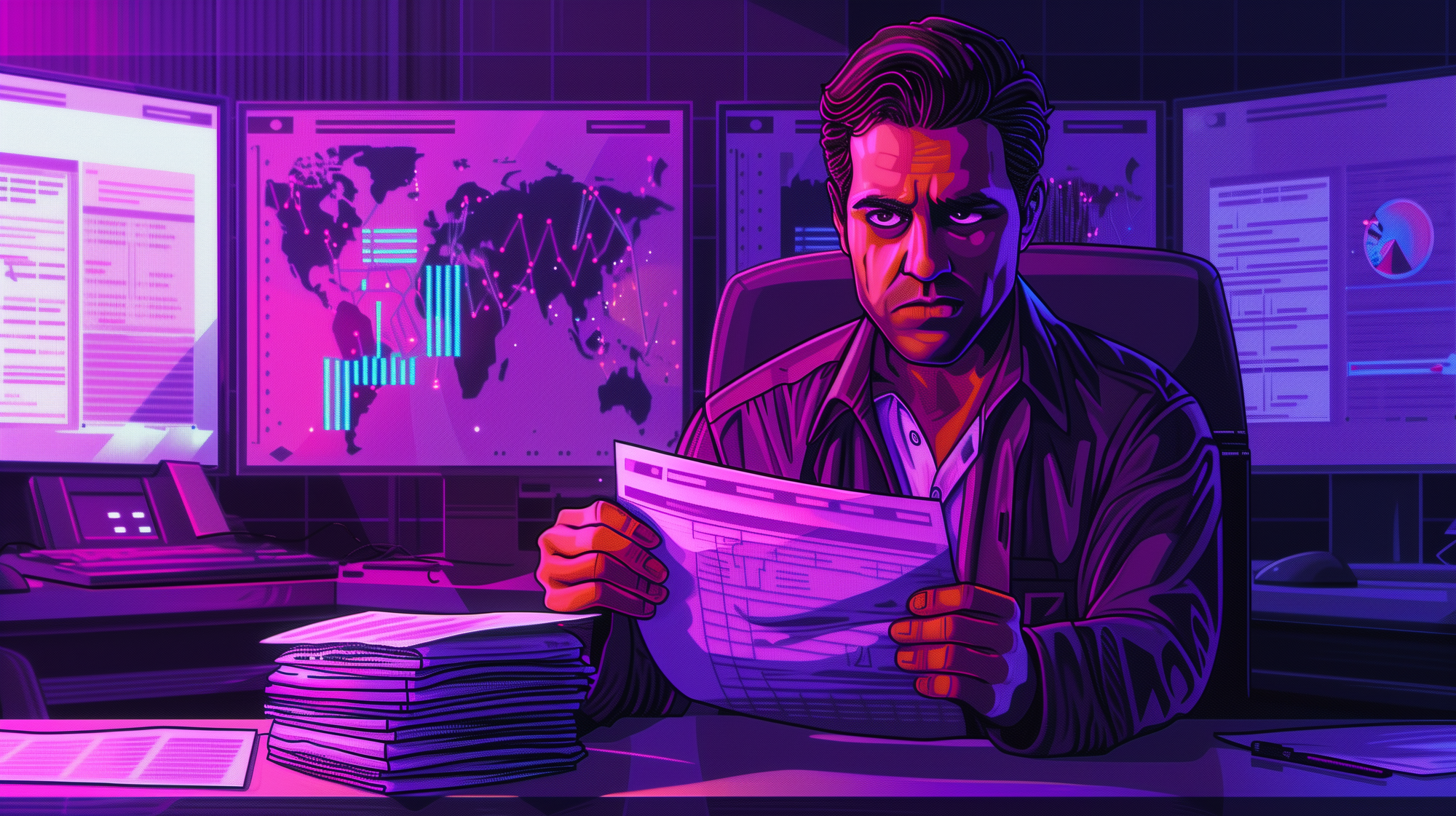
Unveiling the Abyss: Inside the Dark Web's Hidden Threats
In the Dark Web's depths, Nation State and eCrime actors forge global threats. CTI experts strive to pierce this shadowy world, but the most dangerous adversaries leave no trace. The challenge is not just navigating the darkness but redefining what it means to truly secure the digital world.
In the darkest corners of the internet lies a world shrouded in secrecy; a digital underworld where the most dangerous threat actors operate with impunity, cloaked by anonymity and emboldened by the hidden nature of their domain. This is the Dark Web, a realm where Nation State, eCrime threat actors, and malicious forces converge, not to merely exchange illicit goods, but to architect the very threats imperiling our global digital infrastructure. For Cyber Threat Intelligence (CTI) professionals, the mission is clear but daunting: to penetrate this shadowy ecosystem, extract actionable intelligence, and do so without compromising the ethical foundations upon which true security is built.
Yet, as we delve into this abyss, we must confront an uncomfortable truth: our greatest adversaries do not leave trails in the darkness. The sophisticated operatives who orchestrate global cyber warfare do not discuss their plans on forums or advertise their services in marketplaces. They are neither lured by the promise of anonymity nor deceived by the illusion of secrecy. These actors are beyond the reach of conventional monitoring, employing complex operational security rendering traditional intelligence gathering methods inadequate. In this world, the idea of finding "chatter" about the next big attack is often more fantasy than reality, a notion exploited by vendors selling promises rather than insights.
The real challenge, then, is not just to navigate this treacherous terrain, but to understand the very nature of the darkness itself; to recognize the limits of our tools, to question the morality of our methods, and to redefine what it means to truly secure the digital world. This is the crucible in which modern CTI is forged, where the battle for cyber dominance is not only fought in the shadows but in the hearts and minds of those who dare to confront them.

Access and Infiltration
Accessing the Dark Web is not as simple as typing a URL into any old web browser, such as Chrome or Safari. It requires specialized tools, such as Tor (The Onion Router), which allows users to browse anonymously and access websites not indexed by standard search engines. However, gaining access to the Dark Web is only the first step. The real challenge lies in infiltrating the closed communities where eCrime threat actors congregate.
Infiltration is an art form in itself. True CTI practitioners - not those who merely consume CTI from a vendor, but those who are operating on the front lines - often need to create and maintain undercover personas capable of withstanding scrutiny from seasoned criminals. These personas must be carefully crafted, complete with credible backstories, in order to blend seamlessly into the environment. Developing a persona involves deep research into the specific communities one intends to infiltrate. Understanding the culture, language, and behavior of these groups is essential. The persona's interests, knowledge level, and communication style must align with the norms of the target group to avoid raising suspicion.
However, in the more exclusive and tightly controlled areas of the Dark Web, having a convincing personal backstory is often insufficient. Many high-level forums and marketplaces require new members to prove their legitimacy by providing credentials that tie them to a known criminal organization or demonstrate their involvement in illicit activities. This process, known as "vouching," serves as a critical gatekeeping mechanism designed to prevent law enforcement and unverified individuals from gaining access.
To meet these stringent requirements, CTI professionals must often create personas linked to fictitious or semi-legitimate organizations. This can involve establishing entire networks of interrelated personas, each playing a role in a broader criminal enterprise. These organizations might be presented as hacking collectives, fraud rings, or even service providers specializing in cyber crime tools. The persona may need to produce "proof" of their activities, such as a history of transactions, successful attacks, or references from other established members of the community. This proof can sometimes be fabricated using information obtained from previous intelligence operations, or by leveraging data from compromised systems to create a convincing trail of criminal activity.
Tying a persona to an organization requires meticulous planning and ongoing management. Every interaction and every piece of "evidence" must be carefully crafted to reinforce the narrative and withstand scrutiny from even the most suspicious criminals. This might involve creating fake websites, transaction histories, or even orchestrating small-scale operations appearing to be legitimate criminal activities. The goal is to create a persona and an organizational identity so compelling it can pass the rigorous vetting processes employed by these Dark Web communities.
Once access is granted, the CTI practitioner must continue to cultivate the persona, participating in discussions, contributing to the community, and building relationships with other members. This ongoing engagement is crucial for deepening access and gathering more valuable intelligence. At this level, the persona is not merely an observer, but an active participant in the eCrime ecosystem, with all the risks and challenges this entails. The stakes are high, as any misstep could result in the persona being exposed and the operation being compromised.

Sifting Through the Shadows
Once inside, the next challenge is gathering intelligence. The Dark Web is vast, and monitoring it manually is an impossible task. This is where automated tools come into play. Web scrapers and crawlers are deployed to monitor forums, marketplaces, and other platforms for specific keywords or activities indicating emerging threats. These tools continuously gather data, capturing everything from discussions about new malware variants to offers of stolen data or cyber attack services. In most cases, automated scraping is sufficient for collecting large volumes of data quickly, allowing CTI teams to maintain a broad view of the threat landscape. The data gathered through these automated means can then be analyzed using advanced algorithms to identify patterns and trends that may not be immediately apparent to human analysts.
Not all Dark Web sites require specially crafted personas or intricate infiltration strategies for access. Many platforms, particularly those less exclusive or less tightly controlled, operate much like sites on the open web. These sites often allow relatively unrestricted access, where automated scraping tools can perform just as they would on the surface web, collecting publicly available information without the need for deeper human interaction. On these platforms, CTI practitioners deploy scrapers to gather data en masse without the added complexity of developing undercover personas or dealing with stringent access controls. This approach enables broad-spectrum monitoring across a wide range of sites, providing valuable intelligence without the need for elaborate subterfuge.
However, in certain high-security forums or communities where sophisticated operational security (OPSEC) measures are in place, a combination of automation and manual human-based collection is often necessary. These forums may employ techniques such as just merely participating in chats to prove the persona is not a bot, CAPTCHA challenges, multi-factor authentication, or frequent changes to access protocols, which can thwart automated tools.
Additionally, some of the most valuable intelligence may be shared only in encrypted or private messages, or in parts of the forum only accessible to trusted members who have passed highly stringent vetting processes. In these cases, human operatives must step in to navigate the security controls, manually collecting information or engaging directly with other users to extract insights. This blend of automation and human effort ensures intelligence gathering is comprehensive and critical information does not slip through the cracks due to the limitations of automated tools alone.

Top Five Dark Web Source Types
To effectively gather intelligence on the Dark Web, CTI practitioners must focus on specific types of sources most likely to yield valuable information. Below are the top five, and why they are critical to monitor:
- Marketplaces
Dark Web marketplaces are digital black markets where illegal goods and services are bought and sold. These marketplaces often feature listings for stolen data, malware, hacking tools, and other cybercrime-related products. Monitoring these sites allows CTI teams to track the availability of new tools being employed by eCrime threat actors, observe trends across the eCrime ecosystem, and identify emerging threats. The information gleaned from these sources can provide early warning signs of new attack methods or the sale of data from recent breaches.
- Forums and Discussion Boards
Forums and discussion boards are where eCrime threat actors, hackers, and other malicious actors congregate to share knowledge, discuss tactics, and collaborate on criminal activities. These forums often contain valuable insights into the latest attack techniques, vulnerabilities, and the intentions of various threat actors. By monitoring these discussions, CTI professionals can gain a deeper understanding of the threat landscape, and learn about new exploits before they are widely deployed, and much more.
- Vendor Shops
Vendor shops are specialized websites where individual sellers offer illicit goods and services directly to buyers. Unlike marketplaces, which host multiple vendors, these shops are often run by a single entity or group and focus on specific products, such as ransomware kits, phishing tools, or forged documents. Monitoring vendor shops provides insight into the specific tools and services being developed and sold, which can help organizations prepare for and defend against these emerging threats. In addition, monitoring vendor shops is also a particularly powerful tool for locating harvested credentials for sale. eCrime adversaries purchase credentials to use for initial access or privilege escalation in the course of their criminal activity.
- Ransomware Dedicated Leak Sites
Ransomware Dedicated Leak Sites (DLS) serve as powerful tools for ransomware groups, not only to publicly expose stolen data when victims refuse to pay but also to shame organizations by showcasing successful attacks. These sites are leveraged as a form of coercion, with the looming threat of releasing sensitive information unless the ransom demands are met. Prominent examples include platforms operated by groups like BITWISE SPIDER, which runs the LockBit ransomware, and MASKED SPIDER, responsible for BianLian ransomware. By monitoring these leak sites, CTI teams can quickly identify compromised organizations, assess potential impacts on partners and supply chains, and gauge the extent of mission-critical data that may have been exposed. This proactive approach enhances the ability to mitigate damage and respond effectively to these evolving threats.
- Carding Shops
Carding shops are specialized sites where stolen credit card information is bought and sold. These sites are valuable for monitoring because they can provide early indicators of data breaches involving payment information. By tracking activity on carding shops, CTI professionals can identify trends in financial fraud, assess the impact of data breaches, and help organizations take proactive measures to protect their customers.
Each of these Dark Web sources offers a profound glimpse into the clandestine operations of eCrime threat actors, revealing the subtle shifts and emerging trends within the ever-evolving cyber threat landscape. These sources are not just repositories of illicit goods and services but windows into the minds and motives of adversaries who operate beyond the boundaries of law and order. By vigilantly monitoring these dark corridors, CTI professionals do more than just gather data; they engage in a strategic dance with the shadows, extracting critical intelligence and fortifying organizational defenses against unseen threats.
In the vast and often chaotic expanse of the Dark Web, every piece of information is a thread in the intricate web of the global eCrime ecosystem. The ability to weave these threads together into a coherent narrative of emerging threats is what empowers organizations to not only respond to cyber attacks with precision but also to anticipate and thwart them before they materialize. It is within this space that the true power of intelligence lies - not merely in reaction, but in the foresight allowing for proactive defense. In a world where the line between order and chaos is constantly shifting, the mastery of Dark Web intelligence may become a beacon of clarity in the murky depths of cyber warfare.

Communication Analysis
One of the most powerful tools in the CTI arsenal is the analysis of communications between threat actors. Whether these communications take place in encrypted chat rooms, on Dark Web forums, or through cryptocurrency transactions, they can provide invaluable insights into the intentions, capabilities, and identities of adversaries.
Linguistic analysis, for example, can help analysts identify the geographic origins or cultural backgrounds of threat actors based on their use of language. Pattern recognition can reveal relationships between different eCrime threat actor groups or link seemingly unrelated incidents to a single adversary. Even metadata, often overlooked by less experienced analysts, can provide clues leading to the identification of threat actors.
These insights are not just academic; they have real-world implications. Successful communication analysis has led to the disruption of major cyber crime operations, from ransomware gangs to data theft rings. By understanding how these criminals operate, CTI teams can anticipate their next moves and neutralize threats before they reach critical mass.
However, it is important to understand the limitations of Dark Web communication analysis, particularly when it comes to sophisticated Nation State and eCrime adversaries. These threat actors do not discuss their next targets or operational plans on Dark Web forums or other online communication mediums. Such groups employ complex operational security (OPSEC) measures, ensuring their most sensitive discussions and strategies remain hidden from prying eyes.
In some cases, these adversaries may not even need online forums at all, as their members are likely physically co-located, working side by side in the same government building or a tightly controlled environment. For these reasons, the notion of finding meaningful "chatter" about imminent attacks from these advanced groups on the Dark Web is largely misguided.
The reality is that what often passes for "chatter" on the Dark Web is frequently nothing more than snake oil being sold by vendors looking to profit from fear and uncertainty. Unscrupulous individuals may claim to have insider knowledge or connections to high-level threat actors, but in many cases, these claims are exaggerated or outright false. The sophisticated actors truly driving global cyber threats are unlikely to expose their plans or tactics in environments where even the smallest slip could compromise their operations. This understanding highlights the need for CTI teams to be discerning in their analysis and to recognize the limitations of what can be gleaned from Dark Web communications.
While Dark Web forums and communications offers valuable insights, particularly into the broader eCrime ecosystem and lower-level criminals, it is crucial to maintain a realistic perspective on what this intelligence can provide. The real value in communication analysis lies in understanding the broader trends, techniques, and tools being discussed, rather than expecting to uncover direct evidence of the next big attack. Advanced adversaries are far too careful and sophisticated to reveal their intentions in such easily accessible forums.

Ethical and Legal Tightropes
Operating in the Dark Web is not without its ethical and legal challenges. CTI practitioners must navigate a complex landscape where the lines between surveillance and entrapment can become blurred. While it is crucial to gather intelligence to protect organizations and individuals, it is equally important to do so within the bounds of the law and with respect for privacy.
One of the most significant ethical and legal dilemmas in Dark Web intelligence operations is the use of cryptocurrency to purchase goods and services being sold by threat actors. Cryptocurrencies like Bitcoin and Monero are the preferred currencies of the eCrime ecosystem due to their anonymity, making them a powerful tool for CTI analysts attempting to gather intelligence on criminal activities. However, the act of purchasing illegal goods - whether it is stolen data, malware, or other illicit items - poses serious ethical and legal questions. By completing these transactions, even if done in the name of research, analysts are effectively funding the very criminal activities they seek to disrupt. This creates a moral paradox where the pursuit of valuable intelligence inadvertently supports the continuation of illegal enterprises.
From a legal standpoint, purchasing illegal goods on the Dark Web, even for intelligence purposes, can expose organizations and individuals to significant legal risks. Depending on the jurisdiction, such actions may be considered as complicity in criminal activities, potentially leading to severe penalties. Furthermore, this practice can also damage the reputation of the organizations involved, as it blurs the lines between law enforcement and participation in crime. The legal ambiguity surrounding these actions necessitates clear guidelines and ethical standards to ensure intelligence gathering does not cross into the realm of criminality.
This ethical and legal ambiguity extends to customers who may require a vendor to purchase stolen data or other illegal goods on their behalf as part of a broader investigation or security audit. When organizations engage vendors to buy such data, they may believe they are protecting themselves by understanding the scope of a breach or the methods of a cyber attack.
However, this approach directly contributes to the demand for stolen data, thereby fueling the market for further cyber crime. By paying for stolen information, organizations inadvertently support the criminal ecosystem, encouraging threat actors to continue their activities. This creates a vicious cycle where the very actions taken to secure an organization’s data and infrastructure end up reinforcing the threats they face.
Organizations must carefully consider the ethical and legal implications of these actions. While the intelligence gained from such purchases can be invaluable, it is crucial to weigh this against the potential harm caused by funding criminal activities. Instead of resorting to such measures, organizations should seek alternative methods of intelligence gathering, such as collaboration with law enforcement or relying on CTI vendors who adhere to strict ethical standards. By doing so, they can protect themselves from cyber threats without contributing to the problem.
Ethical considerations must guide every aspect of Dark Web intelligence operations. CTI teams must constantly ask themselves: Are we respecting the privacy of innocent individuals? Are we adhering to the legal frameworks governing our actions? Striking this balance is difficult, but it is essential to maintain the integrity of the intelligence process

The Future of Dark Web Intelligence
As CTI practitioners continue to refine their methods for infiltrating and monitoring the Dark Web, the landscape itself is poised to evolve in response. The increasing sophistication of top-tier Nation State and eCrime adversaries means these actors are constantly adapting, employing more advanced operational security (OPSEC) measures, and moving their most sensitive operations away from prying eyes. We may witness a shift towards even more decentralized and encrypted platforms, where the most critical discussions occur well beyond the reach of even conventional Dark Web monitoring.
For CTI teams, the challenge of the future will not be merely about keeping pace with the relentless evolution of cyber threats but about transcending the limitations of traditional intelligence-gathering methods. The path forward demands more than just the deployment of technical tools; it requires the harnessing of deep, multifaceted intelligence cutting through the noise and penetrating the very essence of adversarial strategies. This journey is not one to be undertaken alone. It necessitates collaboration with trusted partners, the fusion of diverse intelligence streams, and a profound understanding of the broader geopolitical and criminal contexts shaping the actions of these threat actors.
The illusion that meaningful "chatter" from Dark Web forums could ever serve as a primary source of predictive intelligence has long been dispelled. These fragments of information, often hyped as the key to foreseeing attacks, are increasingly recognized as insufficient; mere echoes in a vast and complex landscape where the most dangerous adversaries operate in silence, far from the reach of public or semi-public spaces.
As we move forward, the future of Dark Web intelligence will demand a more sophisticated, nuanced approach. It will involve recognizing the inherent limitations of what can be gleaned from these shadowy corners of the internet and instead focusing on the integration of this data with other intelligence streams - those offering richer, more contextual insights into the behavior of threat actors. In this more enlightened approach, CTI teams will not just react to the ripples on the surface but will dive deeper into the currents driving them, crafting strategies as complex and adaptive as the threats they seek to neutralize.
CTI professionals must also grapple with the ethical and legal implications of their methods. As the Dark Web becomes more challenging to navigate, the temptation to engage in ethically questionable practices, such as purchasing illicit goods for intelligence purposes, may grow. However, these actions can have unintended consequences, fueling the very criminal enterprises we seek to dismantle. The future of Dark Web intelligence will demand not only technological innovation but also a steadfast commitment to ethical conduct and legal compliance.
The ability to unmask emerging threats before they strike has always been seen as the foundation of comprehensive cyber security. It embodies the ideal of a world where every cyber attack is foreseen and thwarted in its infancy, protecting systems and data from harm. However, this vision raises a profound question: does true cyber early warning exist, or is it a concept eluding us in the ever-changing landscape of digital threats? As adversaries grow more sophisticated, adapting their tactics with lightning speed, the notion of early warning becomes both critical and increasingly complex. It challenges us to push the boundaries of our intelligence-gathering capabilities, refine our analytical tools, and cultivate a deeper understanding of the motives and patterns driving these threats.
To explore the concept of cyber early warning is to delve into the heart of cyber security itself. Can we ever truly anticipate every threat, or is our pursuit of early warning more about the relentless effort to stay ahead in an unpredictable world? Perhaps early warning is less about achieving absolute foresight and more about fostering a mindset that is ever-vigilant, adaptive, and attuned to the broader context in which cyber threats emerge. It is about seeing the unseen, discerning order within chaos, and preparing not just for the expected, but for the unknown challenges that lie beyond the horizon. In this pursuit, cyber early warning becomes not merely a goal, but a guiding principle, driving us to build defenses not only reactive but resilient, ensuring we remain one step ahead in the ongoing battle to secure the digital frontier.

Conclusion
In the relentless pursuit of security in an increasingly hostile digital world, the Dark Web is both a labyrinth of shadows and a mirror reflecting the darker sides of human ingenuity. As we navigate this underworld, seeking to unmask threats before they strike, we must recognize the limits of our tools and the ethical boundaries we dare not cross.
The future of cyber defense will not be won by those who merely react to the noise of the Dark Web, but by those who anticipate the silent moves of adversaries who have mastered the art of invisibility. In this complex dance of shadows, our greatest weapon is not just intelligence, but the wisdom to know when to act, when to observe, and when to evolve in the face of ever-changing threats.
The true victory lies not in the battles fought, but in the ones prevented through foresight, ethics, and unyielding resolve.






